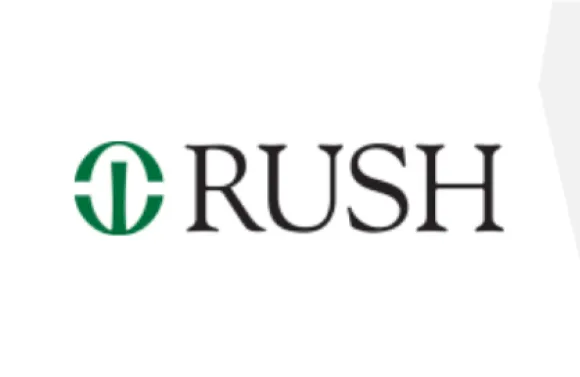
It’s only natural for a company’s office of finance to think of benefits programs as a financial burden. They do, after all, account for more than 30% of total headcount expenses.1
For a financial leader, employee benefits represent a large fixed cost that needs to be mitigated — particularly as the cost of health care continues to rise.
But what if you could look at benefits through a different lens? What if, instead of being a static cost, your employee benefits program was really an area of high ROI?
That may sound like an unlikely turnaround, but let’s take a closer look.
What Do CFOs Care About?
In December last year, a survey of more than 800 CFOs was conducted by Duke University’s Fuqua School of Business and CFO magazine.2 According to the responses, financial executives rank their top 10 most pressing concerns as follows:
- Attracting and retaining qualified employees
- Economic uncertainty
- Data security
- Cost of benefits
- Government policies
- Regulatory requirements
- Rising wages and salaries
- Weak demand for products/services
- Employee productivity
- Access to capital
This is more than simply a list of concerns. In reality, it covers 10 of the most important factors in an organization’s success and can be neatly divided into two parts based on dependencies.
Internal Factors
- Attracting and retaining qualified employees
- Data security
- Cost of benefits
- Rising wages and salaries
- Employee productivity
External Factors
- Economic uncertainty
- Government policies
- Regulatory requirements
- Weak demand for products/services
- Access to capital
On the right side of the table are ‘external factors’ or, in other words, those areas that the average organization has limited or no control over, and which must be reacted to.
On the left side, however, are ‘internal factors’ or those areas that, while concerning, can be directly influenced, particularly by financial leaders.
For the purposes of this article, it’s these internal factors that we’re interested in. More specifically, we’re interested in three of those five factors: attracting and retaining qualified employees, the cost of benefits, and employee productivity.
Why those three factors? Because they are all heavily reliant on one thing: a well-designed and maintained benefits program.
Much More than a Cost Center
It’s time to look through that alternative lens and, instead of thinking of employee benefits in terms of their static costs, think about their potential ROI.
Here’s how an effective benefits program can help to address a financial leader’s top concerns:
- A strong benefits program with good employee engagement leads to a healthier, happier workforce. This naturally has an impact on many areas of the business and can be directly tied to employee productivity.
- Healthy, happy workforces mean lower employee turnover. This is a potential goldmine of value since avoidable employee turnover costs US businesses a trillion dollars every year.3 In fact, recent data from Benefitfocus shows that there’s potential for employee turnover to decrease by 37 percent as a result of active participation and year-round engagement in benefit enrollment. And for an average group with 10k employees, every 10 percent improvement in active participation could retain 70 additional employees for a savings of $1.05 million.4
- Strong benefits programs help employees choose the right benefits. A huge proportion of employees struggle to understand their benefits options,5 so decision support is critical in a modern benefits program. While this requires some initial investment, the ROI is clear — when employees choose the right benefits for their situation (and utilize them properly) both employees and employers have the potential to save money.
- Strong benefits programs are a differentiator to attract top talent. Attracting and retaining a strong talent pool is critical to business success and having a well-designed and enticing benefits program is instrumental in achieving it. Why? Because according to research, US employees are four times more likely to value workplace benefits over extra salary.5
- Strong benefits programs minimize care avoidance. That might not immediately sound like an area for significant ROI, but in reality, it is. Care avoidance is much like what it sounds like where employees avoid treatment in the short term and continue working in poor health because they simply can’t afford it. This is known as ‘presenteeism,’ and it has been estimated to cost employers 10 times more than absenteeism.6
What Does a Strong Employee Benefits Program Look Like?
Ultimately, realizing those benefits and ROI doesn’t happen by accident. It’s the result of a deliberate and persistent effort to design and maintain a powerful, enticing employee benefits program.
To get the ball rolling, here are the six of the most important criteria employees need from a benefits program:
- A wide range of affordable health and voluntary benefit options.
- An easy way to compare the costs and benefits of available plans.
- Decision support tools to help them choose the right benefits.
- An easy-to-use interface for benefits selection and management.
- Year-round communication and support to help them manage and utilize their benefits effectively.
- Help to allocate their healthcare spending properly.
If financial leaders — in collaboration with HR departments — fund and maintain an employee benefits program that’s strategic and focused, they could be well positioned among the competition. Just that fact alone should make a marked difference in your ability to recruit and hold onto top talent.
And, over time, the program you build will make a marked difference on many of the areas most important to you and your business.
Find out more about how to transform employee benefits into a strategic business asset in the ebook, Navigating the New Era of HR & Benefits.


